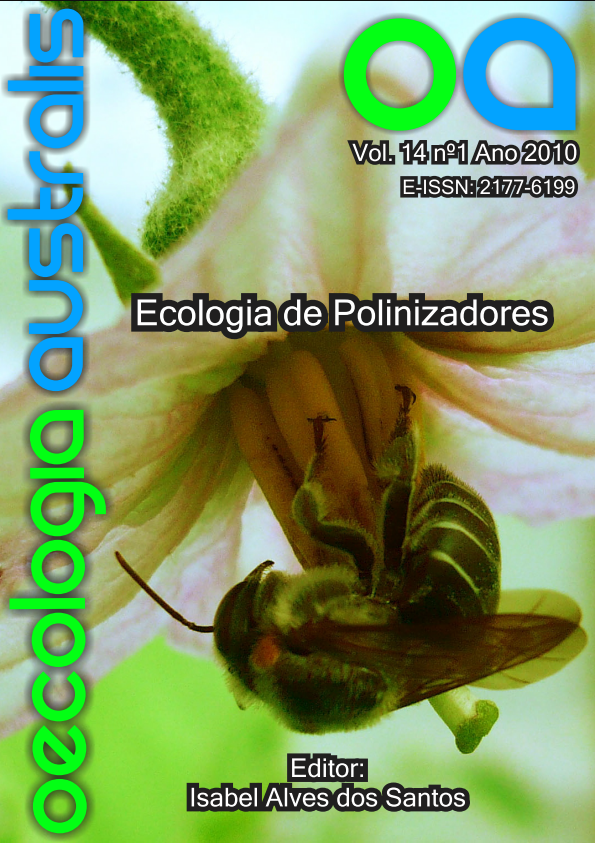BEES AND MELITTOPHILOUS PLANTS OF SECONDARY ATLANTIC FOREST HABITATS AT SANTA CATARINA ISLAND, SOUTHERN BRAZIL
Keywords:
Bee-plant interaction, melittophilous plants, apifauna, subtropical Brazil.Abstract
The present study contributes to the knowledge of the apifauna and its food sources on the Santa Catarina Island, SC, southern Brazil. Bees and their food sources were recorded through non-systematic collections, between November 1999 and April 2008, in several environments on the island. A total of 169 species of bees were captured on 126 species of melittophilous plants. The majority of plants recorded are subshrub and shrub species, with only nine species of trees. 91% of the bee species were collected on native plants, which represent 64% of plant species, while only seven species of bees (4%) were captured exclusively on exotic plants (27% of the plant species). In our study, we show the importance of non-arboreal native plants in maintaining a rich diversity of bees and we indicate plant species that can be used as target species in rapid surveys of the subtropical apifauna in Brazil. The spectrum of species with oligolectic habits and their pollen sources as well as the recording of new food sources for rare species in surveys of bees on flowers are discussed.Downloads
Download data is not yet available.
Published
2017-02-20
Issue
Section
Articles


